Dried Okra Stew
with Lamb
This stew is an ideal winter dish. It goes well with bulgur pilaf and and crusty bread.
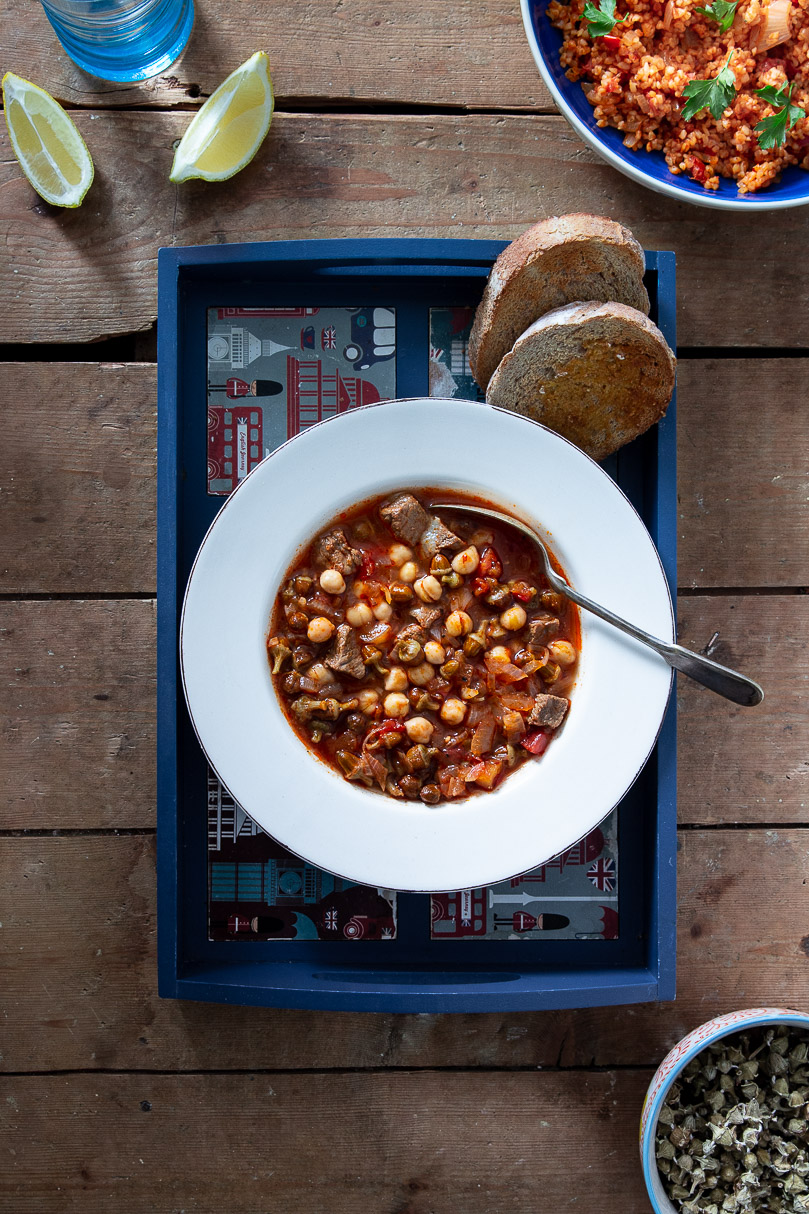
About this Recipe
Dried okra stew is an ideal winter dish as long as you like sour tasting stews. It goes really well with bulgur pilaf and if you have fresh, crusty bread to go with it; it’s even better.
SERVES 2-3
PREP TIME: 1O MINS
COOK TIME: 1 HR 15 MINS
Because of its slimy texture when cooked, most of us would turn a blind eye to okra in the supermarket. Poor okra! Even though it doesn’t receive much respect from us; when it’s cooked right, this vegetable tastes yummy. You only need to know a few tricks.
In the olden days, vegetables were eaten seasonally, as it was not possible to find many of the products during wintertime. In Turkey, people will often dry vegetables during the warm summer months so that they are then available during the winter. That’s why during summertime, you might see many vegetables in strings hanging from the ceilings of people’s balconies. Although nowadays, everything is abundant any time of the year, I still enjoy the taste of dried vegetables. If you don’t have the time to dry them yourself, you can also find them in local marketplaces.
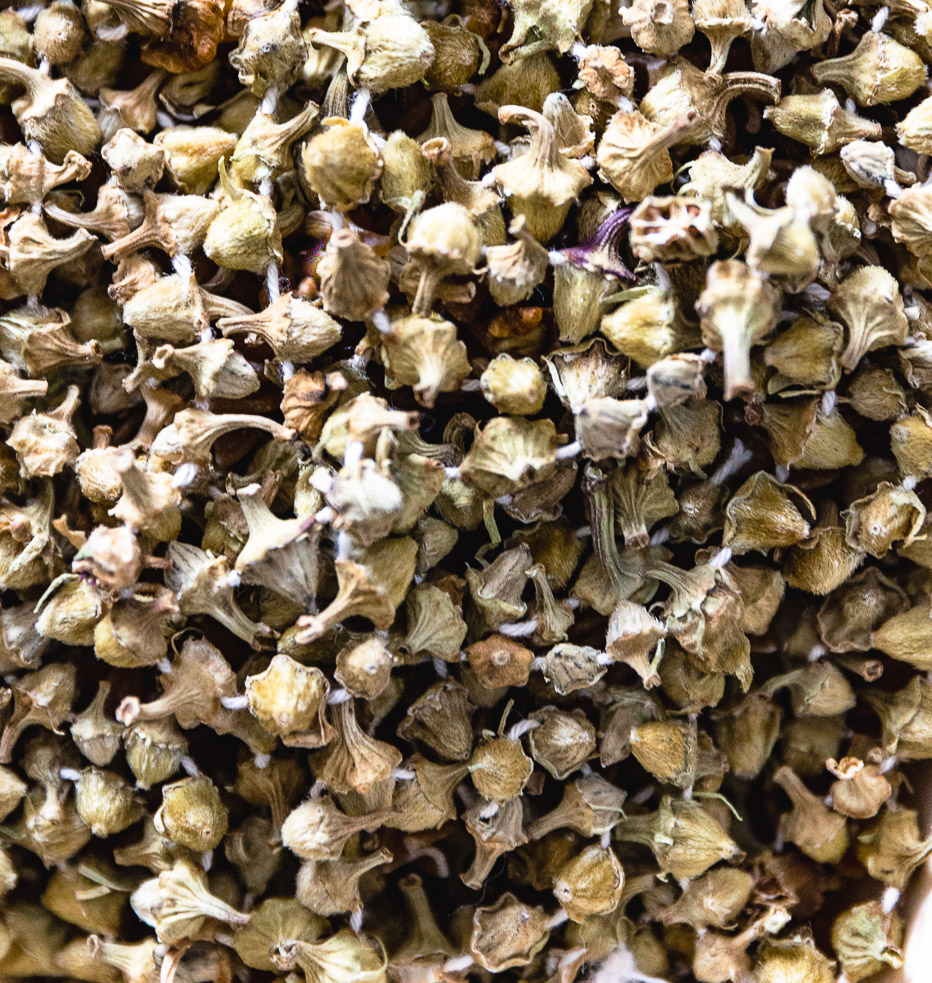
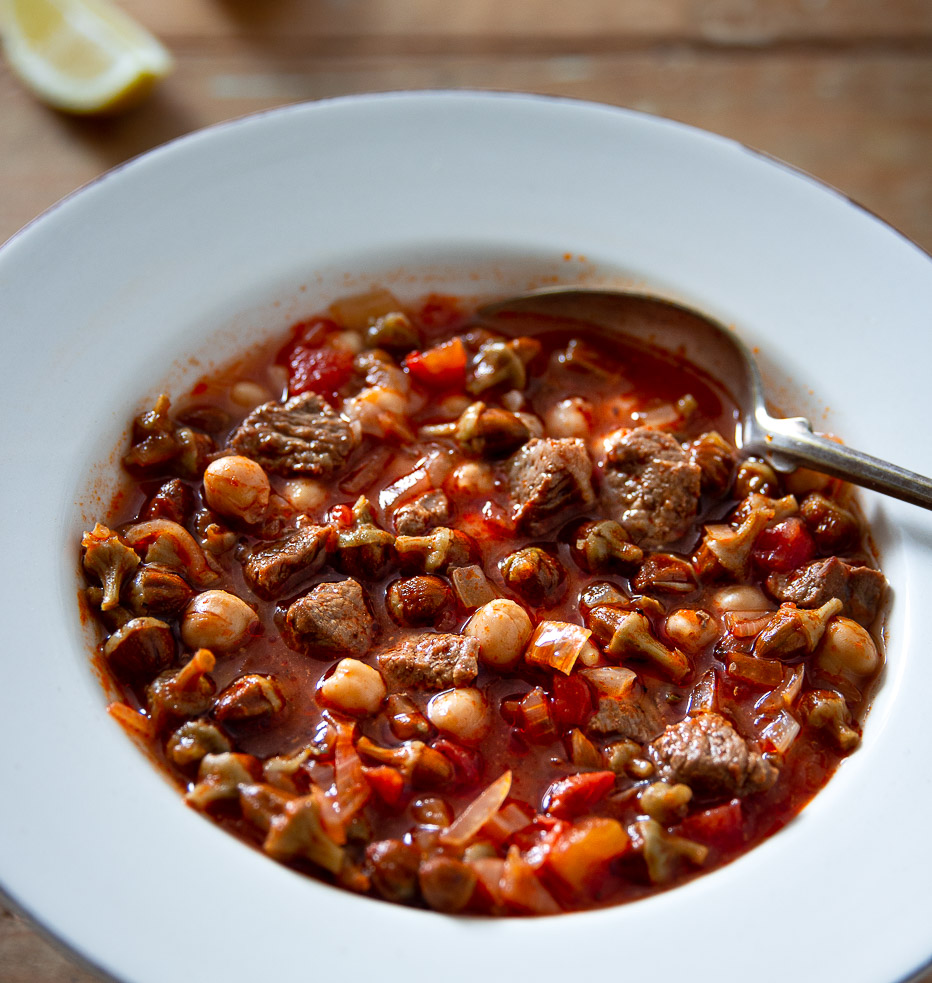
Ingredients
Okras:
- 35 g dried young okra (see note)
- 500 ml of water
- 1/4 tsp lemon salt or 1/2 lemon, squeezed
Stew:
- 2 tbsp vegetable oil
- 200 g lamb or veal, diced into 2-3 cm cubes
- 1 big onion, finely chopped
- 1 tbsp tomato paste (concentrated purée – see note)
- 1 tsp hot pepper paste (see note)
- 120 g can of chopped tomatoes
- 450 ml hot water
- 1/2 lemon, juiced
- 140 g can of chickpeas
- 1/4 tsp salt or more to taste
- Ground black pepper to taste
Step by Step Instructions
Step 1
Without removing them from their strings, place the young okras in a clean tea towel and lightly rub between your hands to remove the thorns.
Step 2
Put 500 ml water in a saucepan and bring it to boil. Add the okras along with lemon salt to stop them from going brown and slimy. Boil them for 5-10 minutes or until they are soft. (The duration could differ according to the size of the okras. I have used ‘young okras’ in this recipe. But if you are using bigger ones, you may need to adjust the boiling time.) Drain them and let them cool. Gently release them from the string by pulling on them.
Step 3
In the meantime, pat the diced meat dry with a paper towel. Heat a stainless steel saucepan or a casserole dish to a medium-high heat. High temperatures are a must to get a caramelised, deep-brown sear on the surface of the meat. When the saucepan is scorching hot, it’s time to add the vegetable oil. As soon as the oil flows smoothly and starts to smoke just slightly, add all of the meat cubes. Sear until brown on all sides, and their juice is reduced.
Step 4
Add the chopped onions and cook them until they are soft and golden in colour.
Step 5
Add tomato paste and pepper paste. Whilst stirring, sauté the pastes for a few minutes until they turn deep maroon colour and become more concentrated.
Step 6
Pour in 450 ml of hot water and bring to boil. Cover it with a lid and simmer for 30 minutes until the meat becomes slightly tender.
Step 7
Combine the chopped tomatoes with the meat mixture and carry on cooking for a few more minutes.
Step 8
Add the boiled okras along with lemon juice and bring to boil. Close the lid and simmer for about 20 minutes over low heat.
Step 9
Add the chickpeas to the mix and simmer for another 10 minutes until both okras and chickpeas are soft.
Step 10
Season with salt and black pepper. Serve the okra stew with bulgur pilaf along with crusty bread. If you wish, you can add more lemon juice to taste.
Goes Well With
Bulgur Pilaf
Notes
Dried okra: In Turkey, you can buy them easily in local markets. In the UK, it’s available online as well as in Turkish and Middle Eastern shops.
Hot pepper paste: It is available online as well as in Turkish and Middle Eastern shops. Hot pepper paste is a thick deep red paste made by blending together cooked red peppers, chillies, olive oil and salt. Then to desiccate all the juices, they are dried in the sun. This deepens the colour and intensifies the flavour. A small amount is enough to give a spicy, rich texture to dishes. It is used mainly in the southeast of Turkey. There is no substitute but you can omit it.
Tomato paste: It is available online as well as in Turkish and Middle Eastern shops. Tomato paste is basically cooked down and concentrated tomatoes. It is used mainly in the southeast of Turkey. Having roots in Urfa and Gaziantep, admittedly I do use it quite a lot in my cooking. You can substitute with double concentrated tomato purée which is widely available in supermarkets.
Love This Recipe? Share It With Your Friends!
You May Also Like
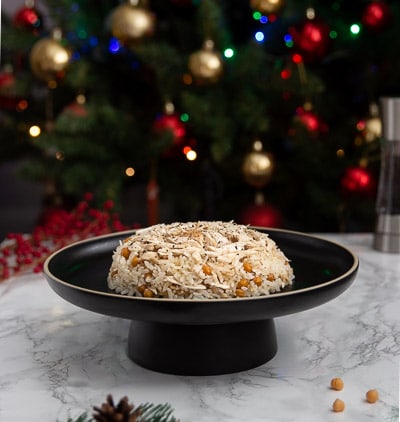
Chicken Pilaf
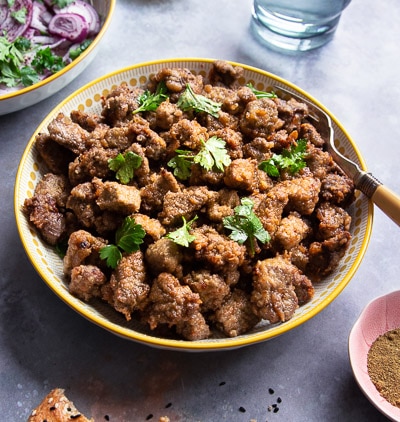
Pan Fried Liver with Red Onion Salad
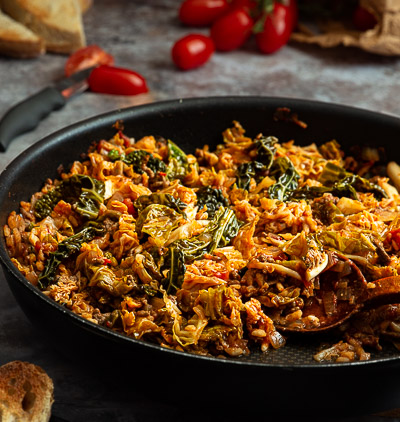

KURU BAMYA, YAZ YEMEĞİNİ ARATMAYAN ÇOK SEVDİĞİM TARİFLERDEN BİRİ TEŞEKKÜRLER SONAY
Kuru bamya kışın ekşi ekşi güzel oluyor.